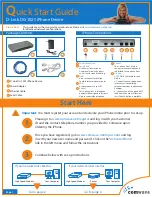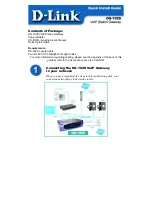
Console Server & Router User Manual
245
The
config
tool is designed to perform multiple actions from one command if need be, so if necessary options can be
chained together.
The
config
tool allows manipulation and querying of the system configuration from the command line. Using
config
the
new configuration can be activated by running the relevant
configurator
which performs the action necessary to make the
configuration changes live.
The custom user configuration is saved in the
/etc/config/config.xml
file. This file is transparently accessed and edited
when configuring the device using the Management Console browser GUI. Only the user
'root'
can configure from the
shell.
By default, the
config
elements are separated by a '.' character. The root of the
config
tree is called
<config>.
To address
a specific element place a '.' between each node/branch e.g. to access and display the description of
user1
type:
# config -g config.users.user1.description
The root node of the
config
tree is <config>. To display the entire
config
tree, type:
# config -g config
To display the help text for the
config
command, type:
# config -h
The
config
application resides in the
/bin
directory. The environmental variable called
PATH
contains a route to the
/bin
directory. This allows a user to simply type
config
at the command prompt instead of the full path
/bin/config
.
Options
-a
–run-all
Run all registered configurators. This performs every configuration synchronization action
pushing all changes to the live system
-h
–help
Display a brief usage message
-v
–verbose
Log extra debug information
-d
–del=id
Remove the given configuration element specified by a '.' separated identifier
-g
–get=id
Display the value of a configuration element
-p
–path=file
Specify an alternate configuration file to use. The default file is located at
/etc/config/config.xml
-r
–run=configurator
Run the specified registered configurator. Registered configurators are listed below.
-s --set=id=value
Change the value of configuration element specified by a '.' separated identifier
-e --export=file
Save active configuration to file
-i --import=file
Load configuration from file
-t --test-import=file
Pretend to load configuration from file
-S --separator=char
The pattern to separate fields with, default is '.'
-P --password=id
Prompt user for a value. Hash the value, then save it in id
The registered configurators are:
Summary of Contents for ACM5000
Page 3: ......
Page 10: ...Table of Contents 10 Console Server RIM Gateway User Manual...
Page 11: ......
Page 94: ...Chapter 5 Firewall Failover and Out of Band 94 Console Server RIM Gateway User Manual...
Page 119: ......
Page 149: ......
Page 191: ......
Page 205: ......
Page 225: ......
Page 303: ......
Page 313: ......
Page 323: ......
















































